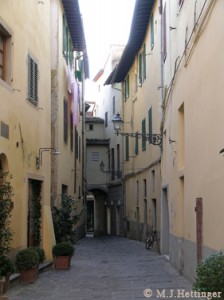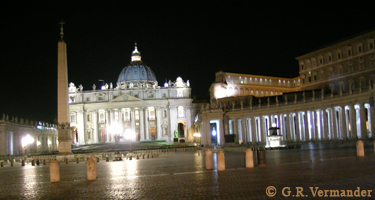Wooster Summer in Tuscany takes place over 4 weeks, starting on May 20th and ending on June 17th. Over that time we will cover two courses, both worth one Wooster credit:
History 212: “Plague in the Towns of Tuscany”

Medieval Street – Pistoia
When the Black Death arrived in Europe in the middle of the fourteenth century, Tuscany’s advanced urban centers were hit first, and hardest. Within the first two years of bubonic plague in Western Europe, such thriving commercial cities as Siena, Florence, and Pisa, saw their populations cut in half. This course will explore the impact of the Black Death on the social, religious, and economic lives of these cities. By mapping the spread of the plague on location, we will consider how these cities responded with new public health measures and new interventions into the private and public lives of citizens. This course qualifies for the Learning Across the Disciplines requirement in History and Social Sciences.
History 214 : “Mystics, Popes, and Pilgrims”
From the late twelfth to the late fourteenth century, western Christendom grew simultaneously in two very different directions. While the papacy became increasingly involved in temporal concerns, often competing with kings and emperors for earthly power, ordinary believers sought more personal means of engaging with their faith. In the cases of more extra-ordinary believers, mystics and pilgrims, extreme physical hardship and the sacrifice of worldly possessions was seen as an avenue toward salvation. This course will explore the nature of these alternative expressions of faith and examine how the popularity and influence of such famous mystics as Francis of Assisi and Catherine of Siena challenged the more worldly aspirations of the hierarchy of the Church. Field trips to the Vatican, Assisi, the old Pilgrim route to Rome, and a working monastery will emphasize the role landscape and location played in the experience of popular religion. This course counts toward the requirements in Cultural Difference and Religious Perspectives.

St. Peter’s Square – Rome





